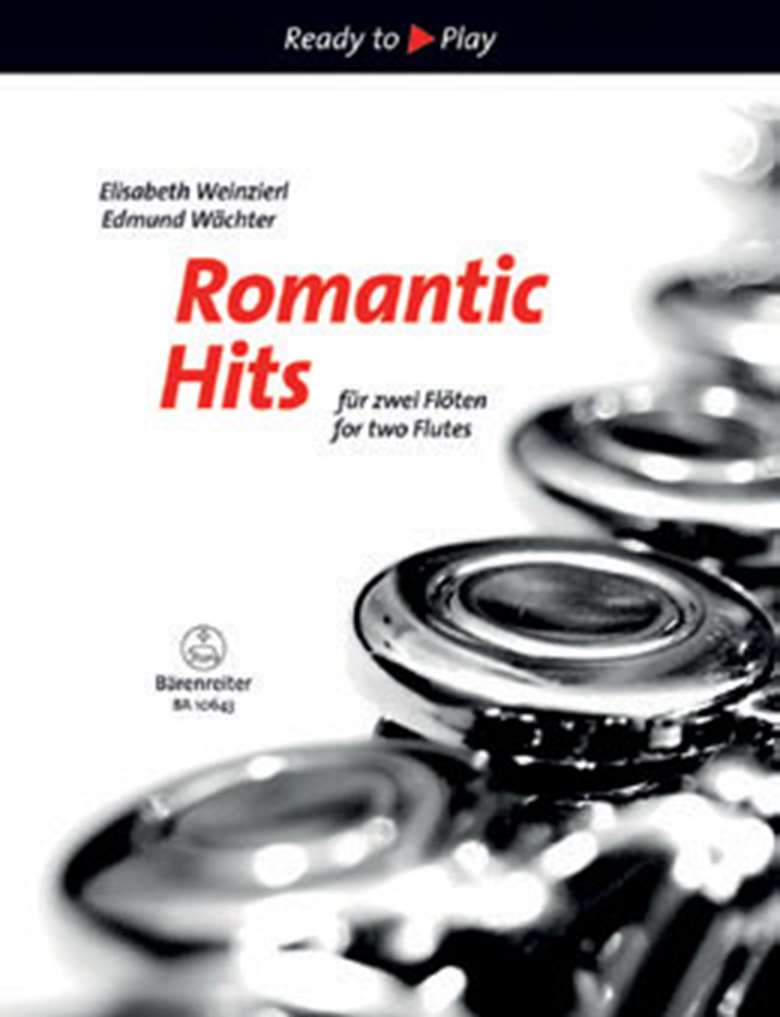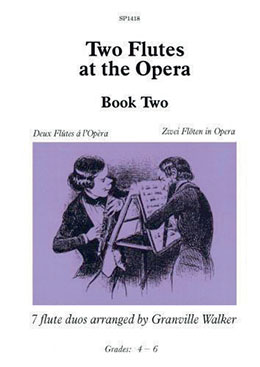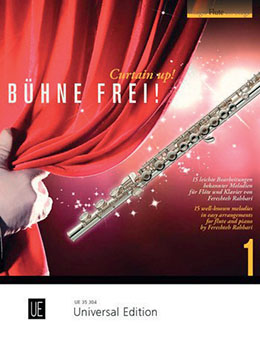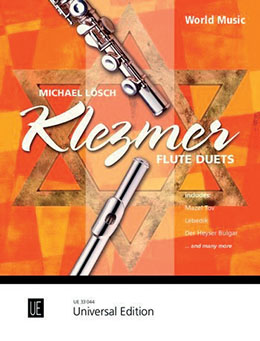Flute Sheet Music Reviews: January 2018
Clarissa Payne
Monday, January 1, 2018
Clarissa Payne reviews four books of flute music for two instruments.

When I'm teaching one-to-one lessons, I almost always finish with duet playing. It's a lovely way to warm down, and for the student to try out things worked on in the lesson.
It also introduces the listening and reading skills needed for wider ensemble playing.
Before the era of recorded music, solo or small-group arrangements of famous tunes from operatic and orchestral works were very popular. Flute players, with our extremely portable instruments, could bring a little piece of the concert hall into people's homes, or play for their own enjoyment. In the 19th century, virtuoso player-composers such as Gariboldi, Köhler and Tulou arranged many famous melodies for flute duet.
For an instrumental student today, playing a famous tune with their teacher is a great way to build confidence in ensemble playing. Romantic Hits is a collection of arrangements of around Grade 2 to 5 level, featuring many well-known melodies. The two parts are usually rhythmically independent but not too challenging – good material with which to introduce the concept of playing from a score and keeping an eye on the other part. Most of the duets take the form of melody and accompaniment – sometimes a rhythmically distinct melody with arpeggiated accompaniment, as in Chopin's ‘Marche Funèbre’ and Donizetti's ‘Fur le nozze a lei funeste’, and sometimes a homophonic harmony part as in Beethoven's ‘Ode to Joy’.
The pieces could also be used as a starter for a listening project – pupils can seek out the full glory of the originals. They also present an opportunity to think about arranging; what elements does the arranger prioritise and how do they achieve effects using only the two flutes?

Two Flutes at the Opera, Book Two - Granville Walker (Spartan Press)
In the same tradition, for more advanced students Two Flutes at the Opera Book Two scales down some big arias and choruses to flute-duet size. The first book in the series has all the really recognisable tunes, while this volume features extracts from perhaps lesser-known excerpts from the operas of composers such as Gluck and Halévy. Players of around Grade 4–6 level will get a great workout. The ‘Trojan March’ from Berlioz’ The Trojans requires a brisk pace from the flautists, and confidence in holding the melody and counter-melody. For the ‘Duet and Dance’ from Humperdinck's Hansel and Gretel, a light, playful touch and crisp articulation will be needed. The players will have to listen carefully to match each other's tonguing and phrasing. Gluck's ‘Viens dans ce sejour paisible’ requires an easy, flowing elegance and pure tone – the two players must work to blend their sound. The only quibble I have is the same as with the first book: the page turns. They fall wherever they happen to fall and the players will have to interrupt playing.

Curtain Up! Duos 1 - Arr Fereshteh Rahbari (Universal Editions)
Book One in the Curtain Up! series of flute duos widens out the time period: backward to the baroque, and forward to the present day. With 25 pieces for players of around Grade 3 to 6 level, it's got something for everybody. French Baroque composers Blavet – himself a flute player – and Boismortier wrote a great deal for the flute, and they are well represented here. The ‘Two Tambourins’ from Blavet's Les Indes Galantes is fast and fun; the players will need to perfectly align their flying, feather-light semiquavers.
To gain a sense of the sound and style, students could seek out performances on the baroque flute. Boismortier's ‘Gavotte and Gigue’ from Sonata No.6 have the two parts closely imitating each other. I've found that duets are a gentle way into experimenting with ornamentation; the pupil doesn't feel exposed and will have examples from the teacher in their ear as they play.
There's plenty of Haydn to give a taste of the Classical style, and then the selection moves swiftly on through Rossini to Bartók and then several pieces by James Rae, giving the pupil a chance to play swing quavers. Again, playing along with the teacher is an excellent way to introduce this. ‘Racing Demons’ is an enjoyable minor-key nod to ‘In the Mood’. The final duet, ‘Tonia’ by Maria Holzeis-Augustin, is a simple waltz which introduces some extended techniques in its second half – key clicks and breathy consonant sounds.

Klezmer Flute Duets - Michael Lösch (Universal Editions)
I always associate klezmer music with clarinets and violins, so it's great to see this appealing collection of klezmer tunes arranged for two flutes at Grade 4 and up. Michael Lösch has mixed recognisable traditional pieces with his own compositions, and stresses in his foreword that this is very much a living tradition which constantly absorbs new influences. The duets are hugely enjoyable to play, many – such as ‘Mazel Tov’ and ‘Revenge’ – requiring very fast tempos indeed to which accelerandos are then added. There are lots of syncopations of course, and a piece in 7/8. Available here are opportunities to extend the pupil's learning: listening, thinking about syncopation, and about how minor keys work and what effect accidentals have. Despite a few awkward page turns, these are great fun to play.

